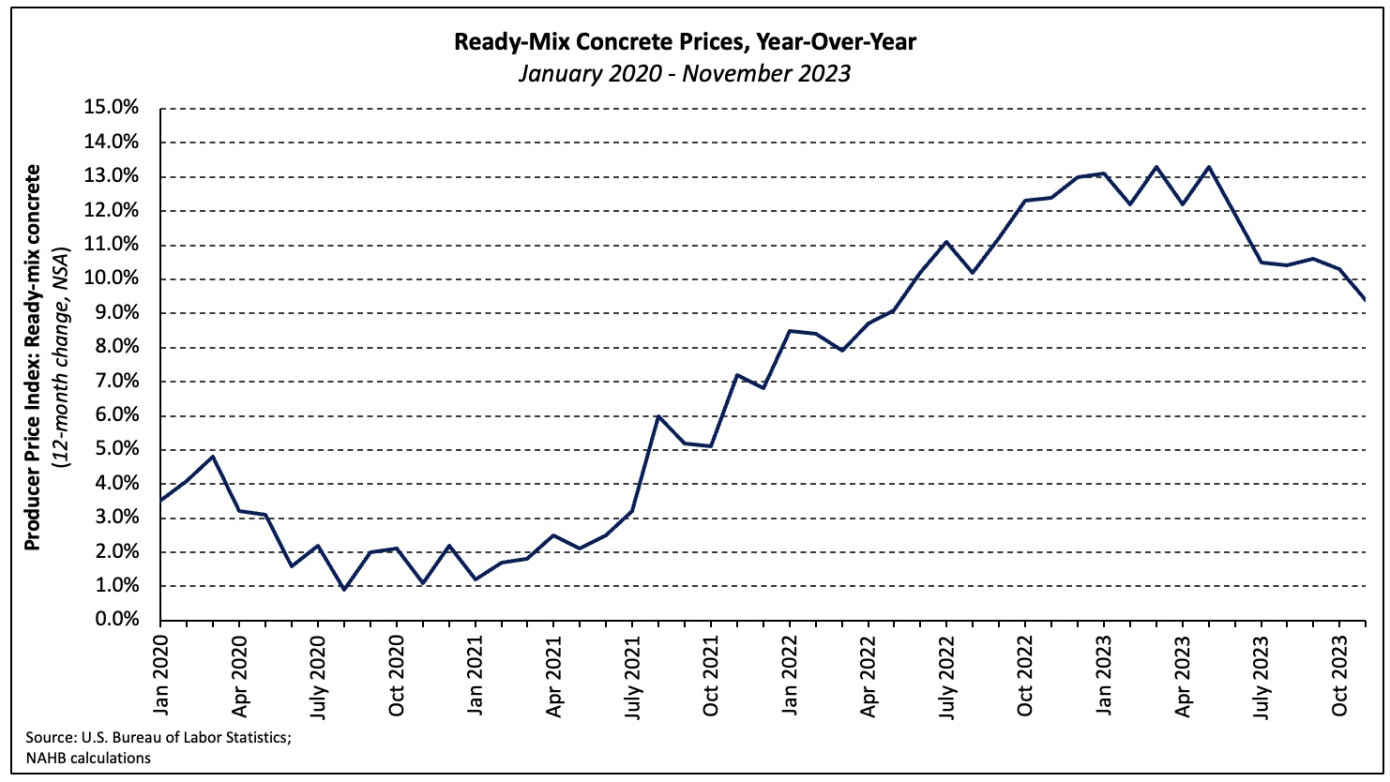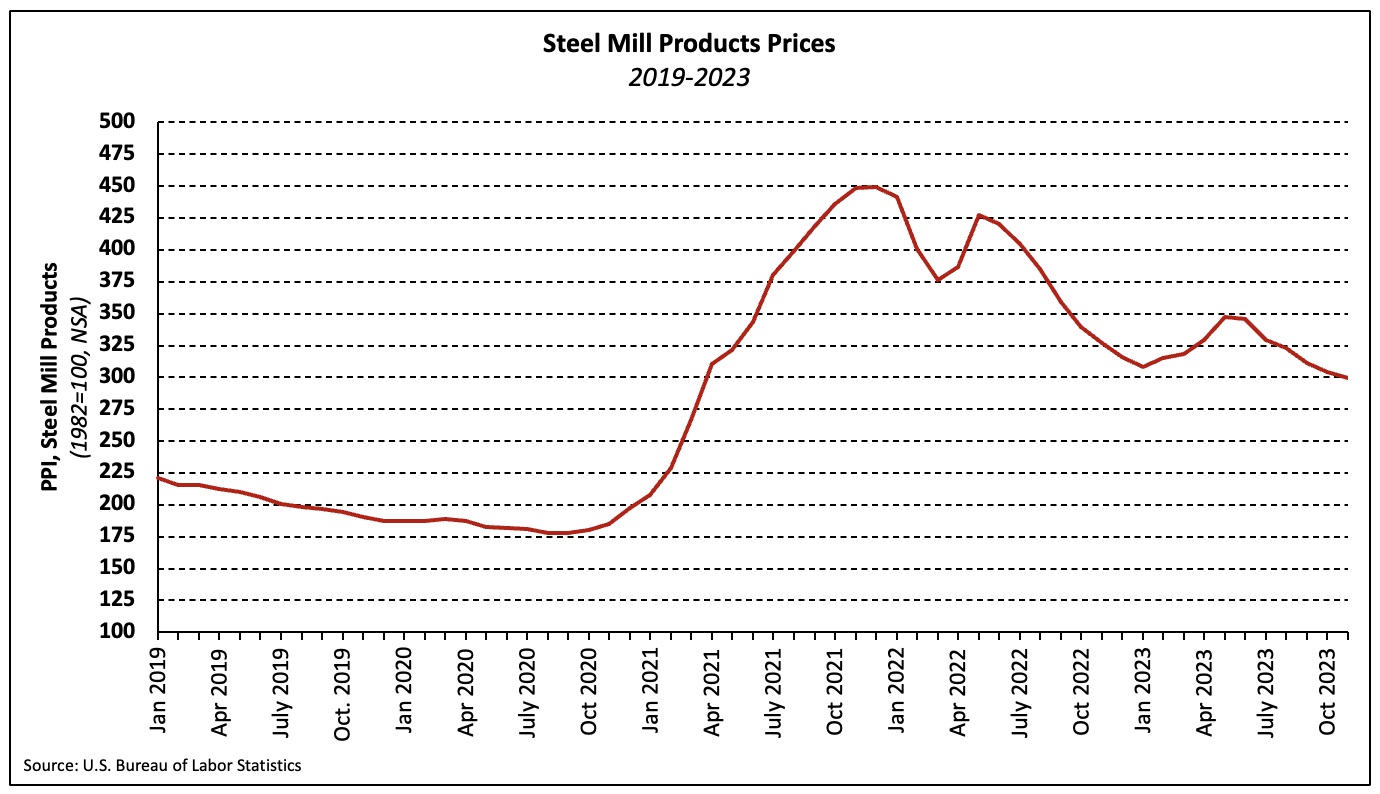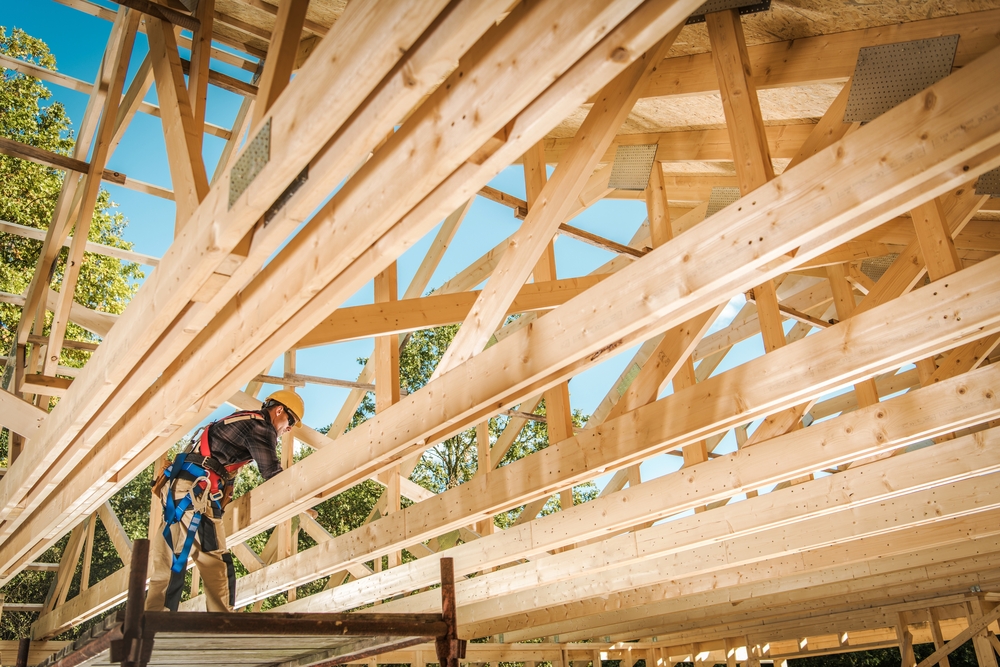The price level of inputs to U.S. residential construction less energy (i.e., building materials) increased 0.2% in November after declining 0.4% in October (revised, not seasonally adjusted), according to the latest Producer Price Index (PPI) report. The index has increased 0.8% (NSA), year-to-date, marking the smallest YTD gain through November since it fell 0.2% over the first 11 months of 2019, as the National Association of Home Builders (NAHB) reported.

The Producer Price Index for all final demand goods was unchanged in November, following a 1.4% decrease in October (seasonally adjusted). Although the index for final demand energy fell 1.2% over the month, the decline was offset by increases in indices for final demand foods and final demand goods less foods and energy (SA). For the 12 months ended in November, the PPI for final demand goods less foods and energy decreased 1.8% (NSA).
The PPI for final demand services was unchanged for the second consecutive month (SA) as decreases in the indices for both final demand trade services as well as transportation and warehousing services were offset by a 0.1% increase across other service indices.
Ready-Mix Concrete
Ready-mix concrete (RMC) prices gained 0.1% in November (SA) as monthly price growth slowed for the second consecutive month. Year-over-year price growth also decelerated for the second month straight and has declined to 9.4% since reaching its 2023 high of 13.3% in May (NSA).

Gypsum Building Materials
The PPI for gypsum building materials was unchanged in November after falling slightly in October (NSA). Gypsum building materials prices last increased in March 2023 and have declined 1.6% year-to-date.

Comparatively, prices are 1.9% lower than they were in November 2022. Twelve-month price growth for gypsum building materials slowed dramatically over the first half of 2023 and turned negative in August.
Steel Mill Products
The price of steel mill products decreased 1.5% in October (NSA). The index for steel mill products prices has declined each of the past six months by a total of 13.9% and is at its lowest level since March 2021.

The PPI for steel mill products has declined 2.9% YTD (NSA), less than the 26.0% YTD decrease in 2022 but in stark contrast to the 115.7% surge over the same period in 2021. The index is roughly one-third lower than the record high reached in December 2021.
Softwood Lumber
Softwood lumber price declines accelerated in November as the index dropped 5.8% (SA), more than double the October decrease. The index has fallen 19.7% over the past 12 months (NSA) and is lower than it has been at any point since March 2020.

Services
The price index of services inputs to residential construction, excluding labor, declined 0.1% in November (NSA) after increasing 0.6% in October (revised). The index has increased 2.9% YTD and 0.5% over the past year.
Freight Prices
Changes in producer prices for the transportation of freight were mixed in November; The prices of rail and deep sea (i.e., ocean) transportation of freight climbed, respectively, 0.4% and 1.6% (NSA),. In contrast, the PPI for truck transportation of freight fell 0.6% (NSA) as prices of both long-distance as well as local freight trucking decreased.
The price of rail transportation of freight has edged down 0.1% (NSA), year-to-date, while prices for truck and deep-sea transportation of freight have decreased 5.3% and 4.1%, respectively.

Building Materials Retailers and Wholesalers
The indices for building materials retailers’ and wholesalers’ gross margins—which account for nearly 40% of the index for services inputs to residential construction—decreased 0.4% and 1.0%, respectively, in November (SA). Over the past year, the PPI for building materials retailing has climbed 3.4% while the index for wholesalers has declined 6.8% (NSA).
